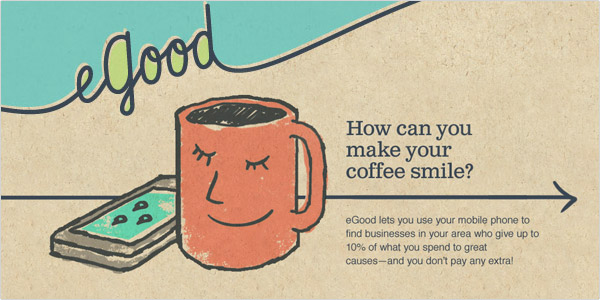There are three ways you can deal with Social Media:
1. Ignore it
2. Get sucked into its bottomless pit of time-drain
3. Get involved and be smart about it
When it might be right to ignore Social Media?
For those who aren’t very technically savvy, it actually may be best to go with #1, because likely you’ll fall into #2 – not knowing where to start, which platform to use, which network to be a part of. If that’s you, then this article isn’t for you (sorry).
Find someone you trust and ask them: “Where should I start”, or even “should I start?” (p.s. check one of my earlier Cox Blue posts on “Why Harry Houdini Would Be Proud of Social Media.”)
Do you know you need to work smarter?
This article is for those of you who are already using Social Media to communicate with potential prospects and ‘fans,’ and want a smarter way to manage it everyday.
What will you learn?
In this article I’ll walk you through how I manage my own Social Media. I also share how I build followers, create interaction and ultimately start conversations with individuals who are interested in what I’ve been sharing. And it takes me about 5 minutes a day…
Which Social Media platforms can you ‘automate’?
You can pretty much automate most of the Social Media platforms, but you need to be careful that you do it for the right reasons, and don’t project the wrong image to your right people.
In this article, I’ll talk about how I manage and build my following on Twitter and my connections on LinkedIn (primarily), and how they share what I do in my days.
The three key aspects of Social Media (IMHO)
Before I do, it’s important to recognise the three key aspects of successful Social Media use:
1. Share relevant content with your audience
2. Ensure that content adds value
3. When someone raises their hand to show interest, be there to start the conversation…
So, how to do this without being chained to your desk or smart phone? It’s easy. Working smarter with Social Media by automating #1 and being notified in an easy to consume way for #3.
I’ll show you how to do this, and I’ll start with Twitter:
My past and my present with Twitter
I used to spend about an hour a week diligently copying and pasting links that I wanted to share with my followers into a spreadsheet, and then bulk upload it to Hootsuite.
I’d collected the links through the week, usually over breakfast, as I read the latest news on my iPad’s Flipboard.
I’d end up scheduling anywhere from 1-2 weeks of updates in an hour, but then I realised about 80-90% of what I was sharing came from the same websites – OK, there’s a pattern here…
A way to work even smarter?
A quick check told me that all my favourite sites had RSS feeds (RSS = Really Simple Syndication), and so I went looking for a tool that could share Twitter posts via RSS. I used a few cloud-based tools, but as Twitter changed their rules, a number of these tools couldn’t keep up (I won’t mention them here).
The last tool I tested is the one I still use today. It’s frequently updated, and a fraction of the cost of other online offerings: TweetAdder. With TweetAdder, I can also add a number of pre-defined tweets for articles I’ve written, or webcasts that I think could add value to my target market.
It’s also locally installed, so it only works when I switch it on. You might think: That’s a bit old school isn’t it? But I like to think that it’s only working when I am, so it reflects my hours, rather than ‘spitting’ stuff out and being seen as a machine while I’m asleep.
I also add my own blog’s RSS in there, as you should be able to too (once you find your RSS), so when I write a new blog, it’s auto posted when I next switch my “Twitter Machine” on.
In my setup, TweetAdder is used in parallel with Buffer (buffer link) and means I can post other content as I come across it in real time with Buffer, to give my Twitter followers some additional value-add content.
Monitoring conversations
All those points above are how I share via Twitter, but how do I know if someone wants to start a conversation without having to log in to Twitter and check? Here’s where I introduce you to: Twe.pe. Anytme someone mentions you or Direct Messages (DM’s) you, Twe.pe sends you an email so you can manage Twitter entirely from your inbox once you’ve got TweetAdder and Buffer setup.
You now know how to automate most (if not all) of your content delivery, and monitor for when people want to talk to you. But how does LinkedIn fit in?
What to do with LinkedIn?
This one is much easier – you just connect Twitter and LinkedIn together so that when you post something in Twitter, it auto posts in LinkedIn. The easiest way to set this up is in your LinkedIn settings, where you connect your Twitter account.
I’ve had emails, LinkedIn messages and phone calls from people who’ve seen a post in LinkedIn, which originated from my Twitter account. And that’s people wanting to start a conversation, and I’ve not had to check anything aside from my inbox.
What are the next steps for you from here?
You should be able to work through those steps above and integrate those tools into your day to free up valuable time and headspace. All the links are listed in the resource box below.
What are the next steps for me?
I’m testing Feedblitz at the moment, to see how I can more easily share my writing with a larger audience. If it’s good enough for Seth Godin, it should be good enough for me. I’ll keep you updated on how I go with that.
One last thing… did I miss anything? Are there any tools that you use that save you hours each week and keep you connected? Feel free to share.
List of resources:
TweetAdder – http://goo.gl/dTC9Bgoo.gl/dTC9B
Google Analytics – http://www.google.com/analytics
Google Shortner – http://www.Goo.gl
Twe.pe – http://www.twe.pe
Buffer – http://www.bufferapp.com
Hootsuite – http://www.hootsuite.com
- Spend Less Than 5 Minutes a Day on Social Media - June 11, 2012
- The Single Biggest Mistake in Branding Yourself - May 2, 2012



![How to Use Social to Drive Leads [VIDEO]](https://www.coxblue.com/wp-content/uploads/2012/05/hub-and-spoke.jpg)
